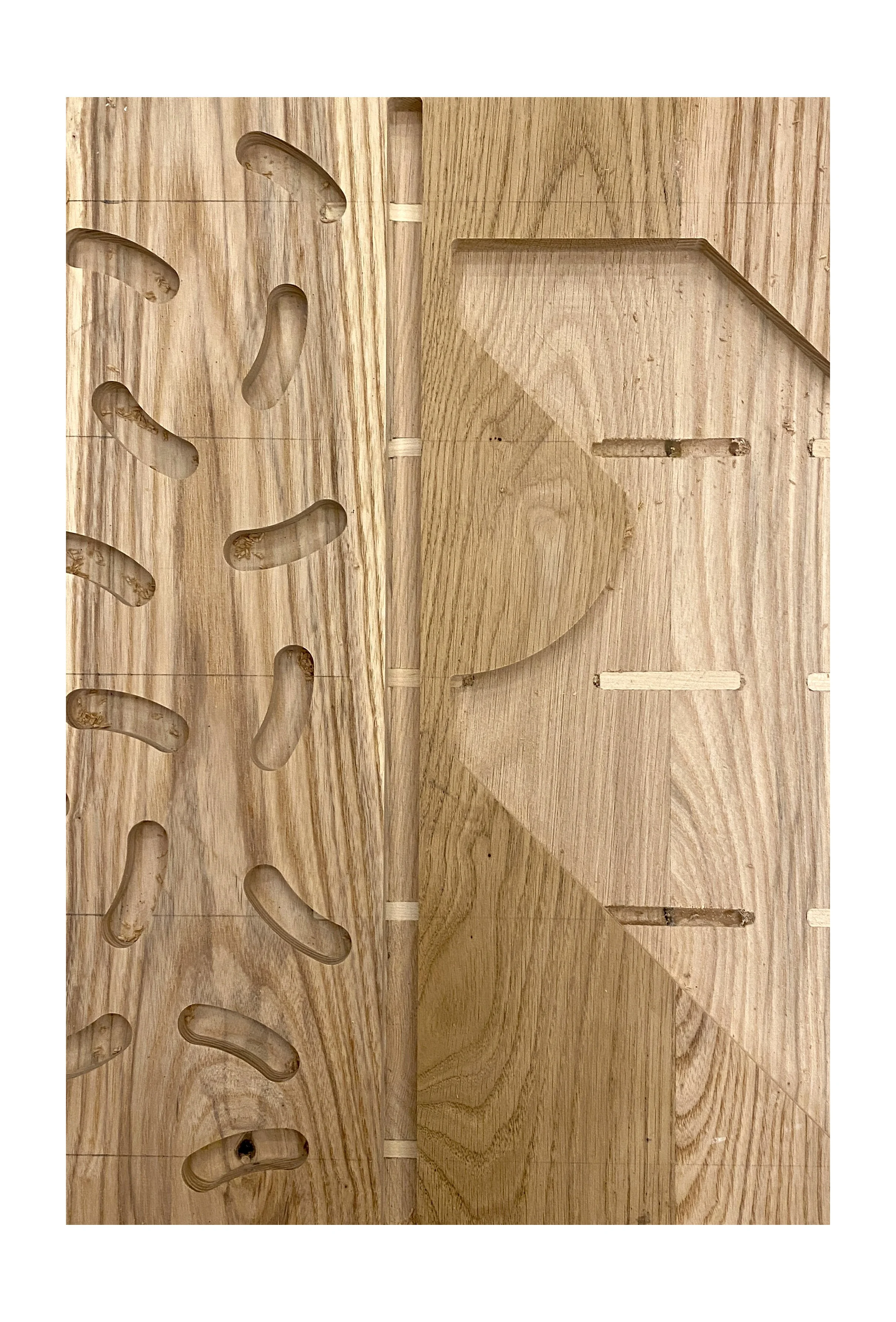Inlaid Surfaces
Prototype inlay consisting of Oak & Ash hardwoods
Combining Materials and finishes.
The process of combining different materials together, or different treatments of the same material, into one seamless surface is a very appealing idea. I experiment a lot with various materials and subsequent surface treatments, from dyed cork through to lacquered Jesmonite. Combining these elements together in the form of an inlaid surface presents an opportunity to create unique surfaces consisting of contrasting colours and textures. Introducing CNC machining further enables more complex designs to be created, and accurately repeated, across a variety of materials. As such, a design can be layered digitally, with each layer allocated an individual material. Each element of the design can then be cut and assembled to gradually build up the inlaid surface.
Hardwood pocket cuts before & after layered elements are glued in
Reverse inlay:
In my early experiments with Jesmonite, a type of polymer based resin, I found that intricate designs can ‘reverse inlayed’ by first creating a cured solid surface from which pockets can be cut and cast directly into. Aided by CNC machining, and the fact that Jesmonite takes on colour pigments very well, this technique opens up the possibility of transforming any design into a functional part of a usable surface, where edge details can be expressed to reveal the true depth of the design.
‘Reverse inlayed’ Jesmonite can be achieved by casting directly into a pre-cast base layer.
INLAID ‘stick’ pattern to form a single cast surface
This approach can be applied to other casting mediums, including epoxy resin, silicone, plaster and concrete.
Other examples of various reverse inlaid cast patterns can be seen below:
Going forwards…
Tests are ongoing with various other material inlays, including dyed cork and more traditional hardwoods. There is also the option to create deeper inlays using thicker materials, which can then be machined into to reveal a three dimensional textured or geometric surface that reveals the inlaid details in more than just a 2D surface.
More details about various inlaid pieces can be found via objects in my shop here.





